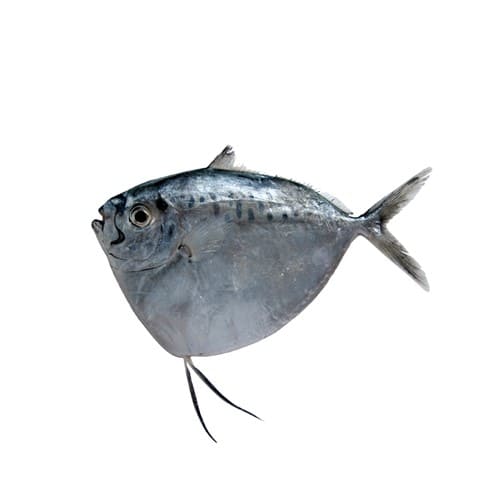

Moonfish-Chandni is the only extant member of the family Menidae. These days, it’s only abundant in the indo-pacific region and is a popular food fish among Southeast Asian communities. The local Philipino community of Pakistan is the major local consumer of this moonfish-chandni.
Note: All our prices are based on the pre-cutting weight of the seafood. The net weight will be dependent on the type of cleaning you choose.
Introduction
Moonfish-Chandni is the only extant member of the family Menidae. These days, it’s only abundant in the indo-pacific region and is a popular food fish among Southeast Asian communities. The local Philipino community of Pakistan is the major local consumer of this moonfish-chandni.This is a weirdly built fish, but more edible than you might expect for something that flat and bony.
Flavor Profile
The Moonfish’s flesh is moderately flavored. The upper part of the fish looks like tuna and tastes like a cross between tuna and salmon. But their pectoral muscles—the ones that power the fins on the side of the body—look and taste a bit like beef.
Habitat
Moonfish is a Sea fish that lives in Deeper coastal waters, around coral reefs, sometimes in estuaries.
Colour
The Moonfish is silvery below and blue-green on the back, with three to four rows of dark gray spots on the upper side
Size
On average, the Moonfish size range is 50 to 150 grams per fish. However, other sizes are also occasionally available.
Physical Attributes
Moonfish do not have visible scales. The body is highly compressed laterally and very deep vertically. The ventral profile is steep, with a sharp ventral edge. The caudal fin is deeply forked. The mouth is small and protrusible.
Cutting Preferences
Moonfish is preferred for whole cutting or boneless fillets.
Approx. Cutting Yields
Health Benefits